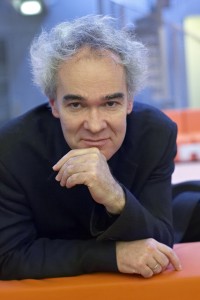One thing that pops out immediately on listening to Michael Jarrell’s music is his seemingly intuitive sense of orchestration. Whether he writes for a large orchestra or a chamber ensemble, his colors are vibrant, his instrumental combinations imaginative and his use of special effects fascinating. Even his pieces for solo instruments conjure up vivid sound images. One can’t help but be reminded of how Pierre Boulez uses the orchestra; each instrument is an apparently endless font of captivating sounds.
This trait is distinctly French and one can certainly say that Jarrell is the latest in a long line of French composers who understood and knew how to write for the orchestra. This lineage goes back to Hector Berlioz and includes Claude Debussy, Maurice Ravel (an absolute master of orchestration) and Boulez.
Another important element of Jarrell’s music is his attention to pitch. And that is to large extent a characteristic of German composers. Arnold Schoenberg and Anton Webern, then later Karlheinz Stockhausen and the whole group of composers in the 1950s who fixated on total serialization (including Boulez and other French composers), were focused primarily on pitch relations. But in Jarrell’s case, he doesn’t embrace an academician’s strict application of pitch structure. Instead, he lets pitch relationships work in a broader sense and allows them to go hand in hand with the predominant emphasis on color. And oftentimes, it feels as if the pitches grow organically out of the orchestrations.
Jarrell is quite a prolific composer and the focus here is to look at some of his music to gain insight into his musical oeuvre as culled from the few recordings of his works that are available in the United States. The 53-year-old Swiss composer is a well known figure in Europe, but on this side of the Atlantic he is largely unknown. Hopefully this overview will introduce him to a new audience of music lovers.
The works that will be examined here are taken from four albums and span a period of a little more than two decades – from the early Assonance for solo clarinet (1983) and Essaims-Cribles for bass clarinet and ensemble (1986-88) to Sillages for flute, clarinet, oboe and orchestra (2005). Within this time frame, which begins around the time Jarrell first started making a name for himself, it is obvious that his musical language is already in place. There is perhaps some refinement in style and in orchestral writing, but like Richard Strauss, Jarrell developed and found his voice early.
What’s striking about Jarrell’s music is its substance and emotional range. His music is intense and he writes with feeling and a rich palette of expressions, and if the listener puts in the effort and goes the extra mile to delve into his music the rewards are staggering. In Jarrell’s works the expressions and emotions become palpable and very 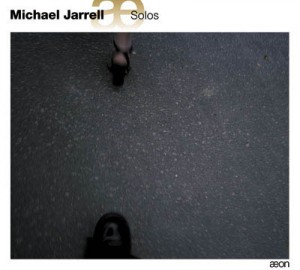 real. He is easily one of the most interesting, vibrant and human composers today.
real. He is easily one of the most interesting, vibrant and human composers today.
Assonance for solo clarinet is from an album devoted entirely to works for one instrument (from the album Michael Jarrell, Solos [æon]). This is the first in a series of pieces by the same name that Jarrell has written over the years. None of them are really connected by themes or other devices. The concept behind the series is to concentrate on one idea and explore its possibilities.
This is quite a meticulously crafted piece that literally exhausts its motives. It’s virtuosic and demands a powerhouse performance from the clarinetist. Jarrell exploits the extreme ranges of the instrument as well as demanding the utmost nuanced playing to capture the broad vista of dynamics, rhythms and tempo shifts.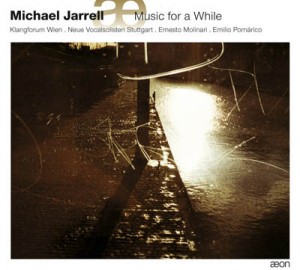
A few years after Assonance Jarrell wrote Essaims-Cribles for bass clarinet and ensemble (on the CD Michael Jarrell, “Music for a While” [æon]). The piece uses some material from Assonance but it’s developed in an entirely different manner. Essaims-Cribles is definitely pitch oriented and, like Assonance, Jarrell exploits the possibilities of the bass clarinet and the chamber ensemble in a similar fashion. The piece is rhythmically charged and also very expressive – perhaps not in the traditional sense of the term, but the music nevertheless is filled with feeling and emotions.
There are bursts of sounds and imagery in Sillages (found on the CD Michael Jarrell, “…prisme/incidences…” [æon]). These are fleeting, yet they linger in one’s mind because of 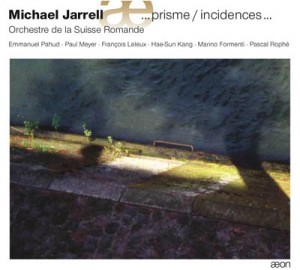 the cumulative effect this brilliantly orchestrated piece has. The musical ideas are simple, but out of these simple elemnts evolve complexities of sound that are logical and all very distinct. And there is a cohesiveness and fluidity that bring a carefully structured order to everything that is heard.
the cumulative effect this brilliantly orchestrated piece has. The musical ideas are simple, but out of these simple elemnts evolve complexities of sound that are logical and all very distinct. And there is a cohesiveness and fluidity that bring a carefully structured order to everything that is heard.
On the same album is Trois Études de Debussy for chamber orchestra from 1992. Jarrell has an affinity for (and musical connection to) Claude Debussy, and this can be considered his homage to the great French impressionist. Jarrell took three pieces from Debussy’s Douze Études (Pour les notes répétées; Pour les sonorités opposées; Pour les accords) and orchestrated them. But rather than just merely arranging these etudes, Jarrell re-imagines them and makes them his own while staying remarkably true to the originals – quite a stunning feat.
While much of Jarrell’s music is instrumental, he has also written a number of vocal pieces and works inspired by poetry and novels. Among the latter is Cassandre, a work he calls a spoken opera for ensemble and actress. Written in 1994, the work was recorded in 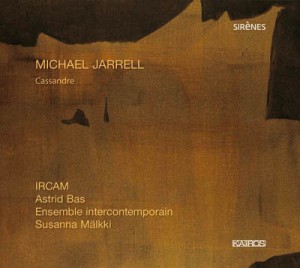 2008 and released a year later (Michael Jarrell, “Cassandre” [KAIROS]).
2008 and released a year later (Michael Jarrell, “Cassandre” [KAIROS]).
The opera was adapted from German author Christa Wolf’s 1984 novel Kassandra. It relates the tale of the Trojan priestess Cassandra who in Wolf’s (and the opera’s) version is cast back and forth between reliving the past and seeing visions of catastrophes yet to occur.
Using a speaker to tell the story rather than a singer has its antecedents in Schoenbergian monodrama, although Jarrell eschews Sprechstimme. Instead, he opts for the unadulterated spoken word and allows it to become a powerful expressive tool without it ending up sounding contrived as frequently happens with Sprechstimme. The text is compelling and presenting it in this fashion brings out the subtleties of the words more fully. The music underscores and supports the spoken text and often both elements are intricately intertwined.
Cassandre is an intense work that evokes vivid imagery that is laden with feeling and raw emotions. It’s a psychological drama that draws the listener into its dark, disturbing and utterly fascinating world.
This is by no means a comprehensive overview of Jarrell’s oeuvre. Jarrell has a long list of works to his name and these are just a few of his compositions that are available on CD in the United States. For a more comprehensive listing of his output, visit his publisher’s website at www.henry-lemoine.com/; click on “Composers” and mouse over his image.
DISCOGRAPHY:
- Michael Jarrell, Cassandre; Astrid Bas, actress, Susanna Mälkki, conductor, Ensemble intercontemporain-IRCAM; KAIROS (0012912KAI).
- Michael Jarrell, Music for a While; Ernesto Molinari, bass clarinet, Emilio Pomárico, conductor, Ensemble Klangforum Wien, Neue Vocalsolisten Stuttgart; æon (AECD0531). Works: Music for a While for instrumental ensemble; Formes-Fragments IIb for four voices, instrumental ensemble and electronics; …car le pensé et l’être sont une même chose for six voices; Essaims-Cribles for bass clarinet and instrumental ensemble.
- Michael Jarrell, …prisme/incidences…; Emmanuel Pahud, flute, Paul Meyer, clarinet, François Leleux, oboe, Hae-Sun Kang, violin, Marino Formenti, piano, Pascal Rophé, conductor, Orchestre de la Suisse Romande; æon (AECD0752). Works: …prisme/incidences for violin and orchestra; Sillages for flute, clarinet, oboe and orchestra; Trois Études de Debussy for orchestra; Abschied for piano and orchestra.
- Michael Jarrell, Solos; Christophe Desjardins, viola, Frédérique Cambreling, harp, Paul Meyer, clarinet, Florent Jodelet, percussion, Hae-Sun Kang, violin. Works: …some leaves II for viola; Offrande for harp; Assonance for clarinet; Assonance VII for percussion; Prismes for violin.

